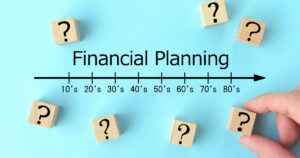Preparing for retirement in 2023 successfully requires thorough advance preparation, no matter your age or stage of career. With life expectancies rising, retirement now spans decades – making proper planning imperative. This comprehensive checklist covers the key financial, healthcare, estate, lifestyle, and other considerations when preparing for your golden years in 2023 and beyond.
Planning years in advance and regularly reviewing allows time to course-correct toward your envisioned retirement. Whether 5 or 15 years away, these action items help set you up to transition smoothly into the next exciting chapter of life on your own terms.
10 Years or More Until Retirement
For those in the early stages of planning, focus first on building assets and establishing healthy financial habits.
❏ Review estimated costs – Use retirement calculators to estimate needs like housing, healthcare, food, and leisure in your desired retirement locations.
❏ Audit current savings – Track your accumulated retirement savings and other income streams to project whether you’re on pace to meet retirement goals.
❏ Increase automatic contributions – Bump up regular 401k or IRA contributions by 1-2% yearly or upon salary raises to boost returns through compounding.
❏ Capture full employer match – If your employer offers a 401k match, contribute enough to claim the full matching amount for free money.
❏ Fund an HSA – Contribute to a Health Savings Account to accumulate funds for future medical costs while enjoying tax savings now.
❏ Optimize tax diversification – Balance pre-tax and post-tax retirement accounts to create strategic income and tax planning options.
❏ Pay down high-interest debts – Prioritize eliminating credit card, auto and other high-interest debts that impede the ability to save for retirement.
❏ Review budget for savings opportunities – Identify areas of discretionary spending to cut back on, allowing redirecting funds toward retirement accounts.
❏ Get smart on Social Security – Research Social Security benefits, timing, and impacts of job changes, and coordinate with a spouse to optimize benefits.
❏ Start building credit toward Medicare – Earn the required 40 credits (10 years of work) to qualify for premium-free Medicare coverage at age 65.

5-10 Years Until Retirement
When nearing retirement, the focus shifts to nailing down your specific lifestyle vision and putting key financial and healthcare preparations in place.
❏ Define a vision for retirement lifestyle – Detail your desired activities, interests, locations, and priorities to shape a fulfilling retirement aligned with goals.
❏ Review target asset allocation – Assess your portfolio risk and adjust asset mix between stocks, bonds, and cash as retirement nears.
❏ Conduct a dry run of the spending plan – Do a test budget for estimated retirement expenses to assess viability given projected income.
❏ Review all sources of income – Inventory social security, pension, and annuity payments along with savings and investments to estimate total monthly income.
❏ Identify any income gaps – If your projected expenses exceed reliable income, develop a plan to close the gap through additional savings, part-time work, reducing spending, etc.
❏ Take advantage of catch-up contributions – If age 50 or over, use IRS catch-up limits to max out annual 401k, IRA, and HSA contributions.
❏ Assess healthcare options – Research Medicare, Medigap plans, prescription drug coverage, and long-term care options against your health profile and budget.
❏ Discuss plans with your spouse – Ensure you and your spouse communicate goals, needs, and finances to coordinate a joint retirement strategy.
❏ Quantify potential retirement tax liabilities – Estimate your future tax exposure in retirement and develop mitigating strategies through appropriate accounts, deductions, residency etc.
❏ Value benefits packages if retiring early – When retiring pre-65, carefully assess the value of employer healthcare, insurance, and other benefits you’ll lose.

1-5 Years Until Retirement
In the home stretch, the focus turns to locking in the when, where, and how details for smoothly transitioning into your new lifestyle.
❏ Pick target retirement date – Choose an official target retirement date based on attained savings, birthday timing for Social Security, work fatigue, and other factors.
❏ Review Medicare options – At least 3 months before age 65, enroll in Medicare Parts A and B to activate coverage on your birthday.
❏ Coordinate with spouse on Social Security – Compare scenarios for optimizing lifetime benefits and decide when each spouse plans to claim.
❏ Schedule trial retirement – If unsure about full retirement, consider taking a trial multi-month break from work to test out living on your projected retirement income.
❏ Define budget and cash flow plan – Build a written monthly household budget funded by income sources to cover expenses in retirement.
❏ Set up emergency savings – Save 6-12 months of living costs in cash reserves for unplanned expenses arising in retirement like home repairs or medical bills.
❏ Eliminate all consumer debt – Pay off credit cards, personal loans, and other remaining debts so you enter retirement carrying minimal liabilities.
❏ Review insurance needs – Audit life, property, auto, liability, medical, and long-term care insurance. Adjust plans and costs to meet retirement risks.
❏ Identify initial retirement projects – Make a list of any major activities, trips, pursuits, or life goals you hope to immediately move forward with as you transition into retirement.
❏ Assess relocation needs – Research target retirement locations. Plan the sequence of selling a current home, acquiring new property, and local regulatory requirements.
❏ Start preventative healthcare – Schedule checkups, screenings, dental cleanings, and appointments to address health issues to enter retirement in optimal health.

1 Year Until Retirement
In the final year, the focus narrows to taking the concrete steps to wrap up your career while activating your next phase of life.
❏ Give formal notice at work – Notify your employer about your retirement date to help ease transition planning for both you and them.
❏ Rollover old 401ks – Consolidate any old 401k plans into a rollover IRA account for simplicity and more control in retirement.
❏ Adjust retirement account allocations – Shift toward lower-risk investments as you prepare to sequence savings and income for upcoming years.
❏ Review beneficiaries – Update beneficiaries on accounts, insurance policies, and estates to prevent any avoidable estate issues.
❏ Track retirement plan incentives – Take advantage of any increased pension benefits or retirement incentives offered for giving ample notice.
❏ Activate Social Security – If retiring between 63-70, decide the exact month to initiate Social Security based on cash flow needs. File paperwork 1-2 months before the target start date.
❏ Apply for renewed passports – Renew passports if needed so they remain valid for 10-15 years to support travel plans in retirement.
❏ Complete pending medical/dental work – Schedule needed medical procedures, dental work, or optical purchases while still under employer insurance plans.
❏ Purchase travel items – Invest in luggage, accessories, gear, and items needed for trips and new hobbies launching post-retirement.
❏ Adjust insurance – Review auto, home, disability, umbrella, and other insurance. Switch or consolidate policies if desired.
Retiring is a process, not just a date. Tick these final to-dos off your list to embrace the next chapter confidently.

The First Year of Retirement
Congratulations, you made it! Use the first year of retirement to settle in and establish satisfying routines.
❏ Align investments to cash flow – Withdraw strategically from taxable, tax-deferred and Roth accounts to optimize income. Converting funds can minimize taxes.
❏ Establish periodic expense review – Conduct periodic reviews of variable spending categories like dining and travel to ensure you remain within budget as your retirement lifestyle stabilizes.
❏ Explore senior citizen discounts – Take advantage of retiree discounts on entertainment, dining, travel, and services within your community.
❏ Identify new social outlets – Join new social groups, clubs, and communities centered on hobbies, sports, or civic engagement to enrich connections.
❏ Establish part-time work (if desired) – If seeking part-time work for enjoyment and income, research options now that time allows.
❏ Plan big trips – With the gift of time, plan bucket-list adventures and excursions. Long overseas trips become easier.
❏ Practice retirement budget – Stick closely to your monthly retirement income and expense budget for 2-3 months to validate and refine it.
❏ Review estate plan – Revisit wills, trusts, powers of attorney, and beneficiary selections to confirm they still meet needs and goals.
Retirement grants the gift of time – take advantage by immersing in passions and relationships that provide fulfillment.
Get Started Today
With ample foresight and planning, the transition to retirement promises inspiration more than trepidation. Every year that goes by, take stock of this checklist to ensure you are preparing appropriately. Incremental steps compound.
While unknowns always exist, eliminating avoidable risks within your control brings confidence. Build the life you envision in the decades ahead by giving your later years focus while priorities still allow. Believe the best chapters lie ahead.
Retirement awaits as the culmination of a life well-lived. Preparation and diligence lead to doors wide open for pursuing your purpose and potential to their fullest. The journey ahead may surprise you.
FAQs About Preparing for Retirement
How much money should I have saved by retirement age?
A common guideline aims for 10-20 times your projected annual expenses in retirement savings by age 60-67. But target amounts depend heavily on monthly budgets, income sources, and lifestyle.
How important is starting to save for retirement early in my career?
Maximizing compounded returns over decades through early, consistent retirement contributions sets the foundation for retirement success. Delaying shortchanges wealth building.
Which types of retirement accounts provide the best tax benefits?
Pre-tax 401ks reduce current taxable income while allowing growth to compound. Backdoor Roth IRAs provide tax-free growth and withdrawals. Good to use both.
What percentage of pre-retirement income needs replacement in retirement?
A starting estimate is 70-80%, then adjust based on factors like paid-off mortgages and work expenses going away while new costs like increased healthcare arise.
When can I sign up for Social Security benefits for maximum return?
Full retirement age of 67 maximizes monthly benefits for those with average life expectancies. Delaying to 70 provides larger but fewer payments.




